 |
Finally the real return of YOUR newsletter ... a little long as it knows how to be, but with all its sections and still plenty of beautiful things to learn on the culinary level ... Kaffir, Zaatar, Sumac, Levantine cuisine ... so many words which were unknown to me (perhaps to you too?) and which are revealed in the Zoom.
A huge THANK YOU therefore to our Chef who makes us discover all these spices and flavors in this new menu ... still new things, sunshine, creations and travel ... come and savor these beautiful and good jars and have a great time on our south facing terrace or in our Winter Garden in case of heat wave !
In the News, for lack of events gathering crowds this summer, enjoy Saumur and the Loire Valley thanks to a Grand Contest Games and many gift certificates to be won with a single click. Finally, in the What's New, a bit of humour never harming… find out how London complies with health standards…
Happy reading to all and we look forward to our reunion at SQUARE!
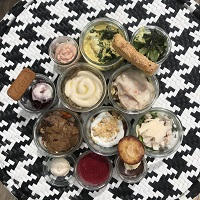 |
The SQUARE of LONDON
Concept of local jars
ON SITE OR TO TAKE AWAY
Hot or cold
|
|
OPEN
From Monday to Friday
12pm to 15pm
BRUNCH
every Sunday !
11h30-15h
|
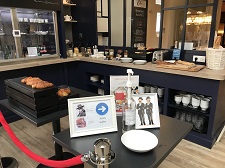 |
|
 |

Nice crumble, goat cheese mousse and fresh cheese
Fresh salmon rillettes with lemon & diced artichoke
Sébastien's César: romaine salad, soft poultry, parmesan shavings, garlic croutons, anchovy Caesar sauce

Perch fillet, zucchini fricassee, shells, saffron sauce, lemongrass & kaffir
Sautéed veal, roasted carrots with Zaatar (thyme, sesame, sumac), gratin dauphinois
Quiche revisited with oriental spices, cauliflower & spinach, sesame seed puff pastry - VEGETARIAN - Gluten free
Gourmet cereals (wheat, soy, rye, rice), eggplant puree with Espelette pepper, béchamel with almond milk - VEGETARIAN - Lactose free

Cherry swim, amarena ice cream & speculoos
Lemon cream, raspberry coulis & meringue
Chocolate ganache, almond cracker, Normandy raw cream
|

Kaffir, Zaatar, Sumac ... how many names that take us far and that smell of spices, so let's take the opportunity to discover them ...
With its thick and bumpy skin, its Siamese leaves and its intoxicating scent, this funny citrus fruit awakens cuisine and creativity. Exotic and so practical, here is a magical antidote to blandness.
Kaffir lemon… where does it come from?
The one also called combava (combawa, cumbava, cumbaba ...), kaffir lime or makrut offers an express trip to Indonesia, its country of origin. Indeed, it is the island of Sumbawa, located near Lombok and belonging to the small islands of the Western Sunda, which would have given it its small name. But the citrus then blossomed throughout the Indian Ocean and took its letters of nobility in Thai cuisine.
What does it look like ?
Belonging to the rutaceae family, the Citrus hystrix tree, of modest size, has thorns and white flowers and produces this fruit resembling a Martian golf ball. It can be seen by its small size, its unsightly pockmarked skin, its deep green color reminiscent of lime, its possible yellow spots (signs of maturity).
How does it taste?
Its unique scent offers a rare freshness approaching lemongrass. Nothing comparable with that of classic yellow or green lemons! If only by sniffing the kaffir leaves, you are immediately transported to Thai delicacies: their scent is inseparable from green curries (chicken or seafood) and other tom yam soups.
In short the Zaatar or Za'atar, which means “thyme” in Persian, is in a way the Provence herb of Levantine cuisine *. It's a Middle Eastern seasoning that's been around for centuries. While the ingredients vary from region to region, zaatar most often includes thyme, oregano or marjoram, sumac, and sesame seeds. This spice with a thousand and one flavors is very fragrant, with a touch of acidity and a salty touch. Zaatar is a fairly versatile blend with a number of uses in cooking. This spice is perfect to accompany salads, fish and hummus.
Zaatar also has many active ingredients and therapeutic virtues:
1. It is an excellent antiseptic and anti-infective
2. It is a physical and psychological stimulator
3. It soothes cough and relieves sore throat
4. It promotes good blood circulation
Zaatar is used in Lebanese, Iranian, Turkish, Greek and now French cuisine.
The little anecdote:
In the Levant, it is believed that the zaatar makes the mind alert and the body strong. For this reason, children are encouraged to eat a zaatar sandwich for breakfast before an exam or before school. This is probably a myth fabricated during the Lebanese Civil War to encourage the consumption of zaatar because provisions were low at the time but zaatar was in abundance.
… Sorry, I can't help but share with you a new vocabulary word that I just discovered… cooking is definitely a bottomless pit!
* Levantine cuisine is the traditional cuisine of the Levant region. Although it is now divided into several countries including Armenia, Egypt, Israel, Lebanon, Palestine, Iran, Syria, Jordan and Turkey, the region was a single entity under the Empire Ottoman where different culinary traditions were mixed. Nowadays, it is one of the main components of Mediterranean cuisine (Jewish or Arab).
Summaq (سماق) in literary Arabic probably means "red".
Sumac is therefore a garnet-colored spice with brown reflections. It comes in the form of a slightly creamy and moist powder. Slightly tangy, even vinegar, sumac sparkles in the mouth and will leave you some natural salty notes on the taste buds! Add a few pinches on fish, omelets, white meats, papillotes ...
The sumac is to be sprinkled as a final touch. It is an excellent palliative for people who cook without salt! It replaces lemon for all seafood cuisine. With this spice, we also prepare the famous Zaatar… CQFD!
By the way, what is sumac?
This spice is the fruit of the sumac of the curlers. Its flowers are grouped in pyramid shapes called "drupes". At maturity they are dried and pulverized. After drying, sumac is naturally and slightly salty (like stevia which, conversely, is naturally sweet). Despite drying, it remains moist, but the more it dries over time ... the more salty it will naturally become. We therefore advise you to keep it rather cool than warm.
Beware poison! In the 125 species listed, some are poisonous such as poison ivy whose juice is a very active poison or the lacquer tree, also called varnished sumac whose juice, also poisonous, is used by the Japanese to varnish wooden utensils. in lacquer.
And now, let's see if you've got it all right… associate the photos below with the right spice or Kaffir…
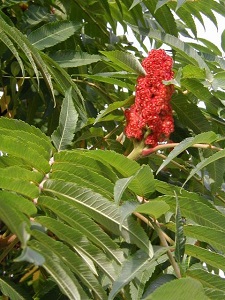 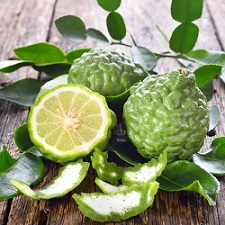
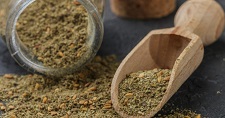 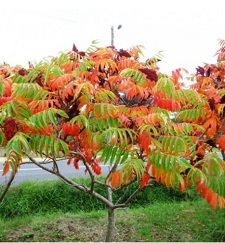
|